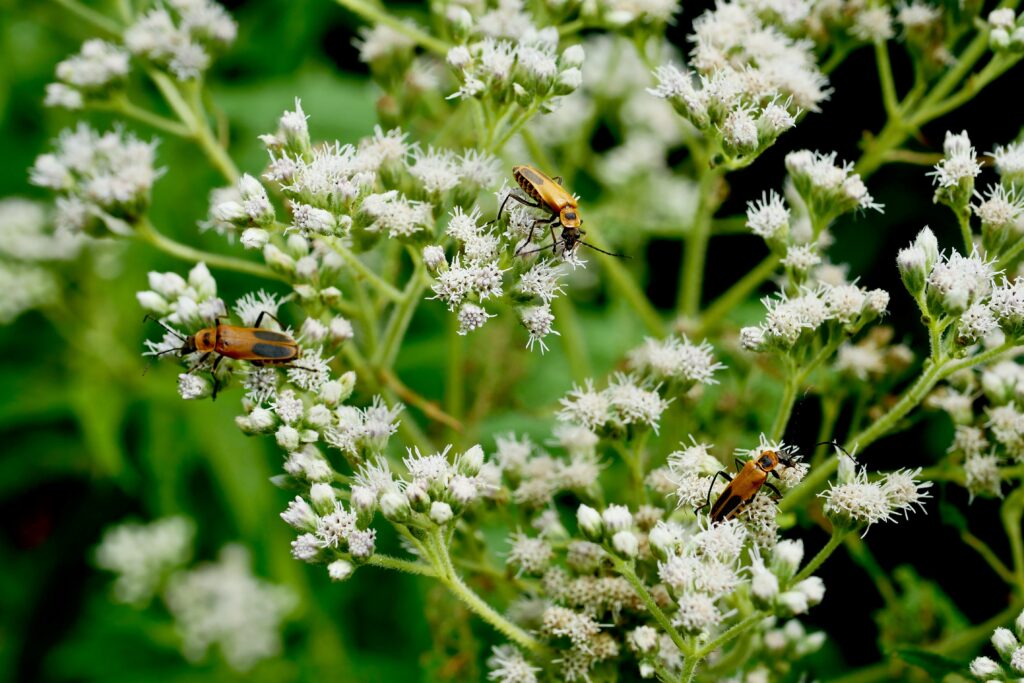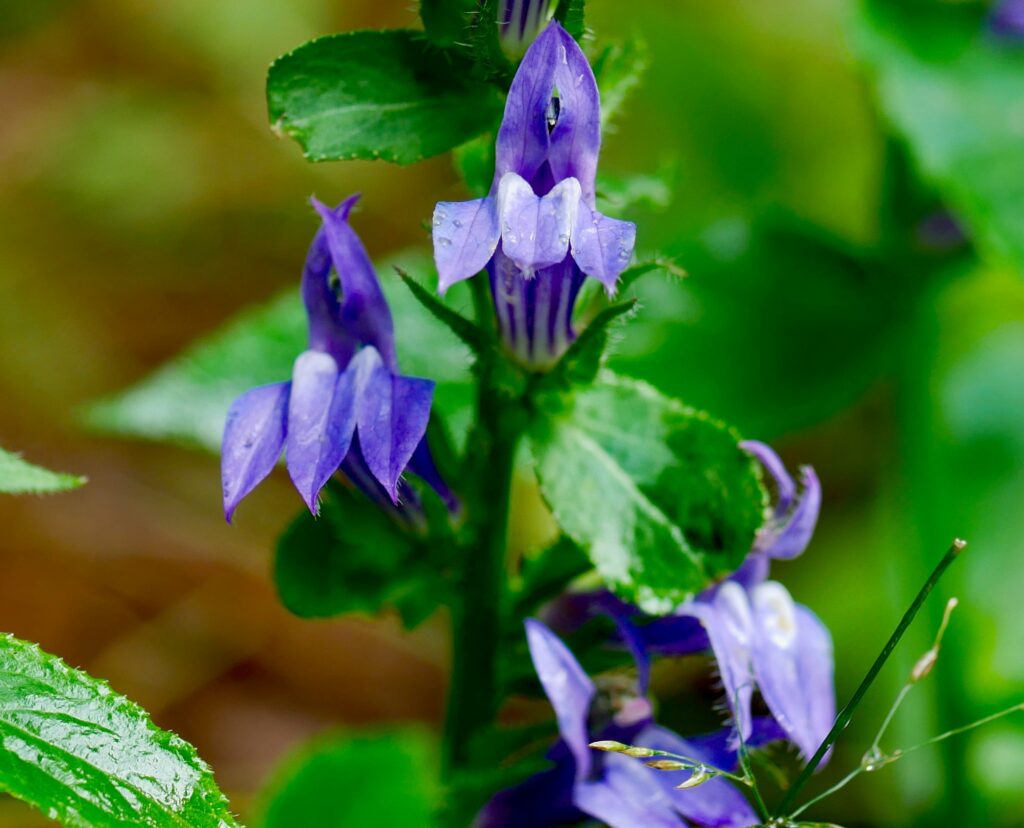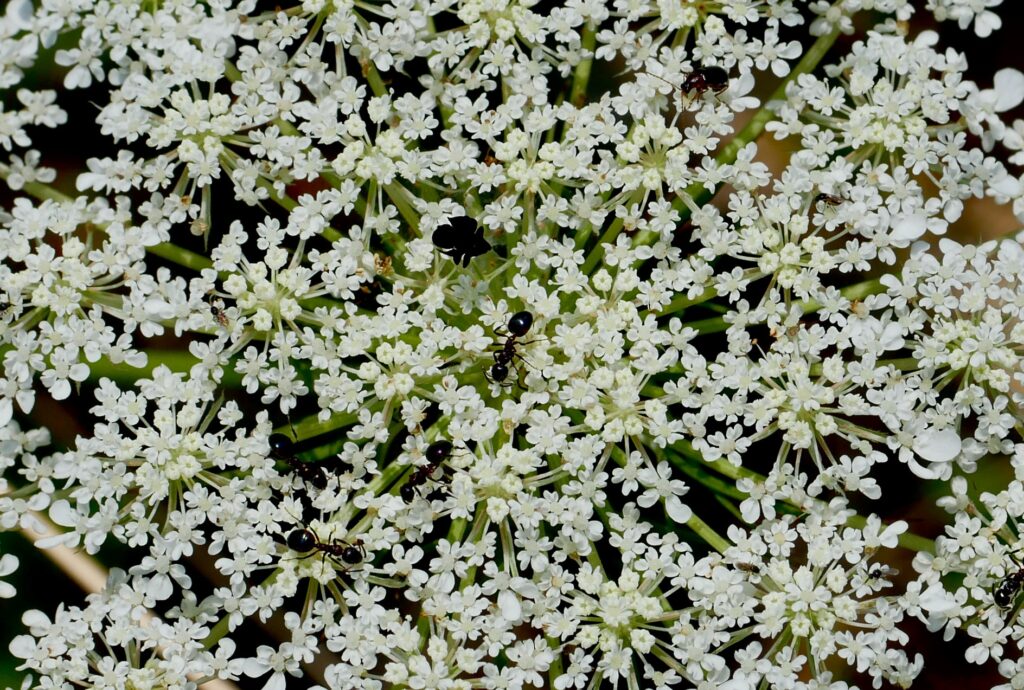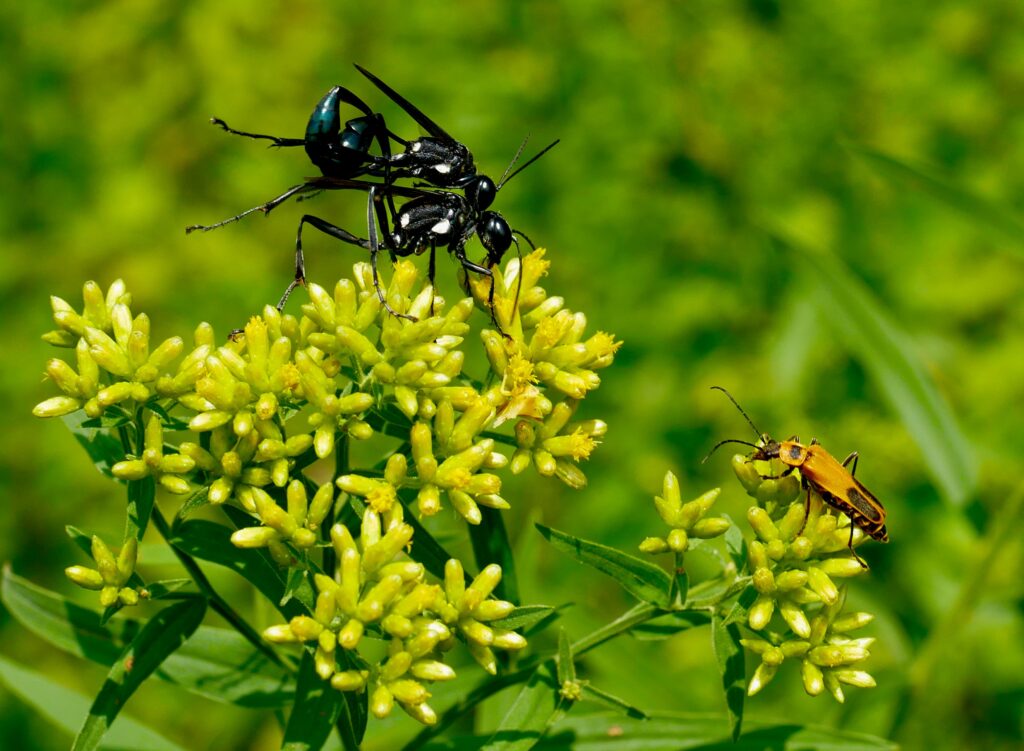By David P. Davis
Newsroom@DominionPost.com
As we head into the end of summer, the West Virginia Botanic Garden, at 1061 Tyrone Road, continues to provide blooms not only from cultivated garden plants but also from summer wildflowers.
Wildflowers now blooming include rose pink, cardinal flowers, boneset and an array of goldenrods. These late-season wildflowers are critical to the ecology of the eastern United States, as they provide a much needed nectar source for all manner of butterflies and bees.
Now blooming is one of my favorites, common boneset, Eupatorium perfoliatum. While I like that boneset is easy to grow, propagate and move around the garden, what I really appreciate is how it supports a huge population of soldier beetles, Chauliognathus pensylvanicus. At the WVBG, the white boneset flowers become a festive treat for these orange and black beetles scurrying about finding nectar and pollen.

Also blooming now is a more rare wildflower, the blue cardinal flower, Lobelia siphilitica. Two weeks ago we covered its scarlet cousin in the Butterfly Garden, but we have recently found the blue cardinal flower just off our event lawn near our education and event center. This herbaceous perennial typically likes full sun to part shade and wet soils. Like other Lobelia, the flower has two lips, with the upper lip having two lobes, and a lower lip with three lobes. The bloom has a lovely lavender color.

Another wildflower in bloom is the rose pink, Sabatia angularis. This small biennial wildflower (it takes two years to flower), has taken up residence in the basin of the former water reservoir. The rose pink is only about a foot tall and its blooming stalk is a cluster of pink five-petal blooms, each with chartreuse reproductive structures.
Accompanying the rose pink, is goldenrod and Queen Anne’s lace, Daucus carota. At the WVBG, I believe we have at least three species of goldenrod, each variations on the theme of late season, golden-yellow asters, with arrays and clusters of small blooms. What they all have in common is their attraction to not only many members of the order Hymenoptera (bees, wasps, and ants) but also to many Coleoptera (beetles). Some of my favorite beetle species will soon be clustering on the goldenrods from the family Cerambycidae, longhorn beetles.

What can I say for Queen Anne’s lace (also called wild carrot)? It is so ubiquitous and common to anyone who ventures outside, could there be something I can say? Yes!
Take another look … closer. No … closer. What you will see might surprise you, as you take in the tiny white clusters of florets that make up the lacy bloom. And, you might find ants, wasps and itsy-bitsy beetles. Marvelous!
That and more is now in bloom at the WVBG.
David P. Davis, Ph.D., is a gardener at the WVBG. For visiting information, maps, and more, visit WVBG.org.





